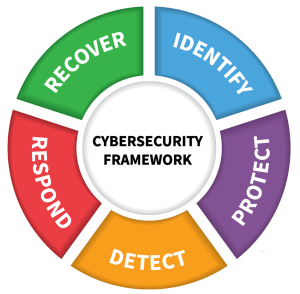
Understanding the Business Impact of Bots
Digital transformation efforts continue to accelerate and are pivotal for industries to sustain business and ensure growth. The major challenge is securing applications against malicious
A vulnerability is a flaw or weakness in a system that, if exploited, would allow a user to gain unauthorized access to conduct an attack. Vulnerability management is the process of identifying, prioritizing, remediating, and reporting on vulnerabilities to proactively reduce your cyber risk. Because new vulnerabilities are constantly being introduced, vulnerability management is not a one-time project but an ongoing lifecycle. As a result, you will never completely eliminate all vulnerabilities, but you can effectively prioritize which ones to remediate by implementing an effective vulnerability management process.
If you’re just getting started putting in place a formal vulnerability management program or you’re looking for ways to evaluate and improve your current program, using a framework can provide valuable guidance. The NIST Cybersecurity Framework and the SANS Maturity Model are two standards commonly applied to vulnerability management.
For successful vulnerability management, you need to have complete visibility into your assets, including third-party assets like vendors with access to internal environments. The tools you’re using for vulnerability management should be able to provide you with a complete picture of all of the assets (servers, desktops, mobile devices, applications, etc.) in your network, in one location. You will then map discovered vulnerabilities to this inventory for effective prioritization.
Vulnerability scanning uses automated tools to detect and classify system weaknesses. Your vulnerability scanning tools should be able to conduct network and application scans, using a variety of scanning methods including agent-based, agentless, authenticated, unauthenticated, static, and dynamic.
A risk-based approach to vulnerability management prioritizes remediating vulnerabilities based on the impact they will have on your business, as well as the likelihood that exploitation will take place. This is compared to other approaches such as compliance-driven vulnerability management, which focuses more on checking the boxes necessary to meet regulatory requirements, as opposed to analyzing the overall threat landscape.
You may determine that a particular vulnerability is present in key assets throughout your network, but if the conditions required to exploit it are such that exploitation is highly unlikely, this vulnerability poses less real risk to your organization and might be prioritized lower than other more exploitable vulnerabilities. The only way to know this information is by integrating real-time threat intelligence data into your vulnerability management system.
Since the CVSS score doesn’t show the complete picture of a vulnerability, you need another way to quantitatively assess which vulnerabilities to prioritize. Assigning a risk score to your assets can help provide this standard metric. A risk score is based off of the asset value, threat likelihood, and vulnerability exposure.
It is generally best practice to install patches that are released for the software you’re using because it will reduce the likelihood of a successful breach, ensure that your systems are up to date, and help you comply with regulatory requirements. However, that doesn’t mean that you should necessarily install a patch the moment it is released. Patches should be implemented strategically, taking into account the impact deploying a patch will have on your business operations and security posture.
Many organizations experience delays between detecting the vulnerability and actually remediating the vulnerability due to a lack of automation and tool communication between their vulnerability scanning tools and the tools used to deploy the update. modern vulnerability detection tools are beginning to incorporate the ability to remediate and deploy patches from the same system as detection, which can help make the pipeline much more efficient. Others without the capability to deploy patches are at least integrating with systems like Microsoft SCCM and HCL BigFix that are used to roll out updates. These tools will also integrate with popular ticketing systems such as Jira and ServiceNow to minimize the headache caused by transferring a detected vulnerability out for remediation.
If you have good vulnerability management tools in place, the meat of the report will come from the vulnerability scanner. It should provide you with the name of the vulnerability, date of discovery, CVSS score, a description of the vulnerability and the systems impacted, and a POC (proof of concept) of the vulnerability. You will then want to augment the vulnerability scanner’s report with some analysis to provide context to the report.
Vulnerability assessment reports can be used for a number of different purposes, which means you might have a few different audiences for your report. The Board of Directors will not need as detailed a report as your IT team, so you should create versions of your report accordingly, highlighting the information that matters to that particular audience.
Vulnerability assessment reports provide a roadmap for remediation, but they can also be used to demonstrate regulatory compliance, benchmark progress, and lower your cyber insurance premium.

Digital transformation efforts continue to accelerate and are pivotal for industries to sustain business and ensure growth. The major challenge is securing applications against malicious

The NIST Cybersecurity Framework was first drafted by the National Institute of Standards and Technology in 2014, with the latest version, version 1.1, following in

A vulnerability is a flaw or weakness in a system that, if exploited, would allow a user to gain unauthorized access to conduct an attack.
Complete an application form if you are interested in becoming a member of RH-ISAC.